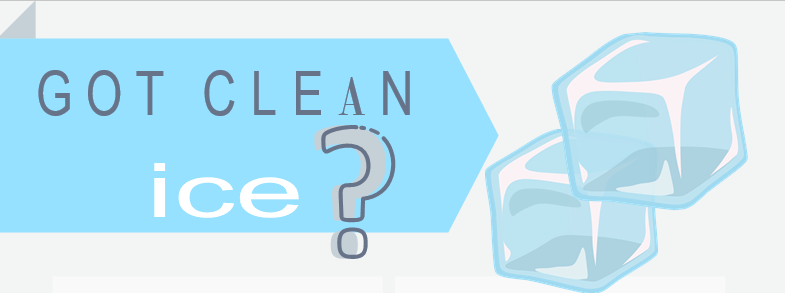Did you know that there are many health risks associated with dirty ice machines, since dirty machines produce dirty ice? Ice machines are prone to contamination, both microbial and viral. There are many species of bacteria that can live in a freezer. Ice can be contaminated with E. Coli, Salmonella, Shigella, Norovirus, Hepatitis A and Listeria. If you are not cleaning and sanitizing your ice machines regularly you are putting your patients and customers at risk of illness.
Ice is considered a food according to the FDA. Food Law 2009 chapter 4 states that ice machines must be cleaned and sanitized as per manufacturers recommendations, which is typically 2-4 times per year. (This also depends upon usage volume, location of the machine and water condition).
How does ice get dirty?
- Dirty hands / poor handling
- Not removing older ice, or reusing old ice
- Hard to clean crevices
Basic guidelines to keeping ice safe:
- Only store ice in the bin (make sure ice scoop is stored separately)
- Use approved scoop (not cups / hands)
- Scoops and holder should be cleaned & sanitized frequently
- Always use clean utensils when touching ice Keep coils & cleaning unit free from dust and debris
- Do not put unused ice back into the holding bin (discard)
- Consider using water filters since they help to keep bacteria from getting into the water supply
- Make sure gaskets provide a tight seal to prevent moisture to build up inside the machine
- Keep bin closed (dust carries bacteria)
- Inspect ice machine weekly checking for debris/slime. (use flashlight to inspect dim areas, especially ice chute)
- Clean & sanitize machine as per manufacturer guidelines
Signs that you need to clean your ice maker:
- Poor ice quality (not clear)
- Bad odor
- Low ice capacity &/or releases ice slowly
Cleaning/Sanitizing
Cleaning alone is not sufficient. Bacteria, mold, viruses and mineral scales can build up in various parts of a machine. This is why it is important that you have a reliable person to take the machine apart to clean & sanitize the machine 2-4 times per year.
Proper cleaning / sanitizing is a time consuming process that can take 2-3 hours per machine.
Cleaning removes lime, scale and mineral deposits which can often go undetected. Sanitizing is to disinfect the machine.
Consequences of Not regularly maintaining your ice machine:
- Health violations
- Food borne illness
- Costly future repairs
- Decreased efficiency
- Increased energy costs
Machines that are not regularly maintained will cause damage to your unit. Scale build up can cause ice to stick to the evaporator plates which can inhibit heat transfer. This creates freeze-ups, decreased ice capacity and longer harvest times.
Why seek a professional?
- Keep your patients/customers safe
- Ability to follow manufacturers guidelines
- Each ice machine is different with moving parts that require specific attention
- Improve your ice machines efficiency and decrease energy costs


